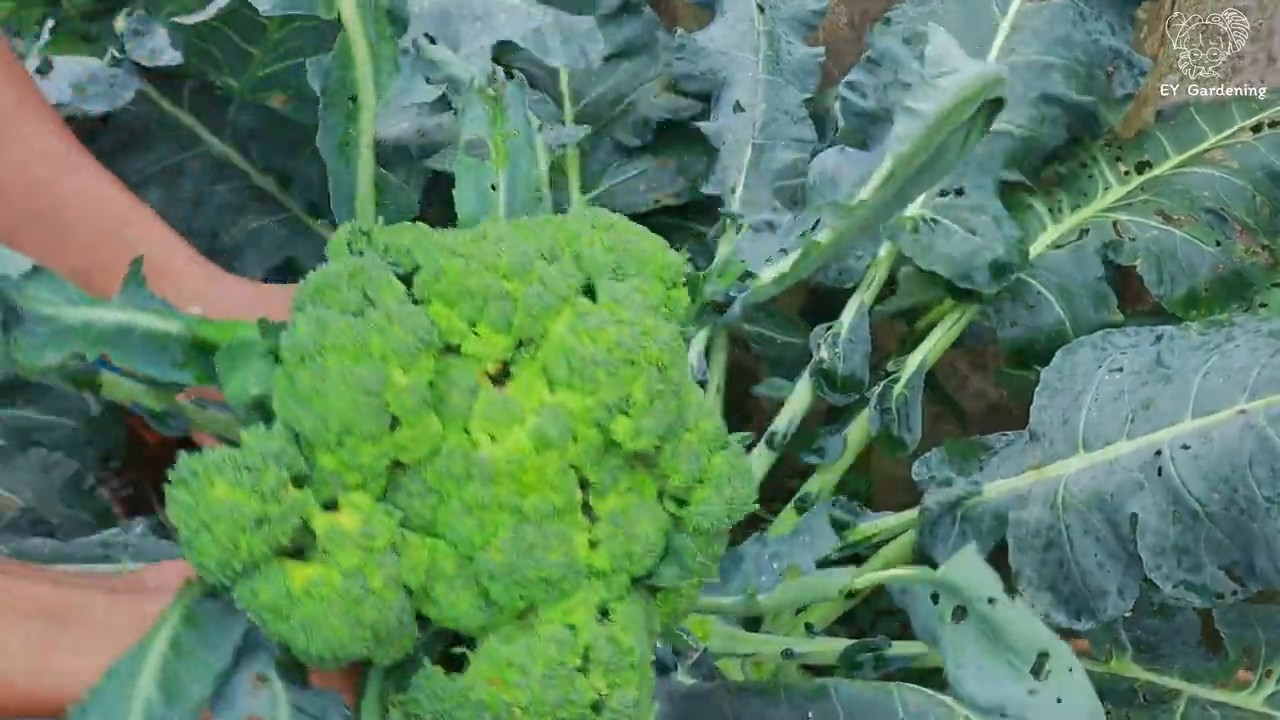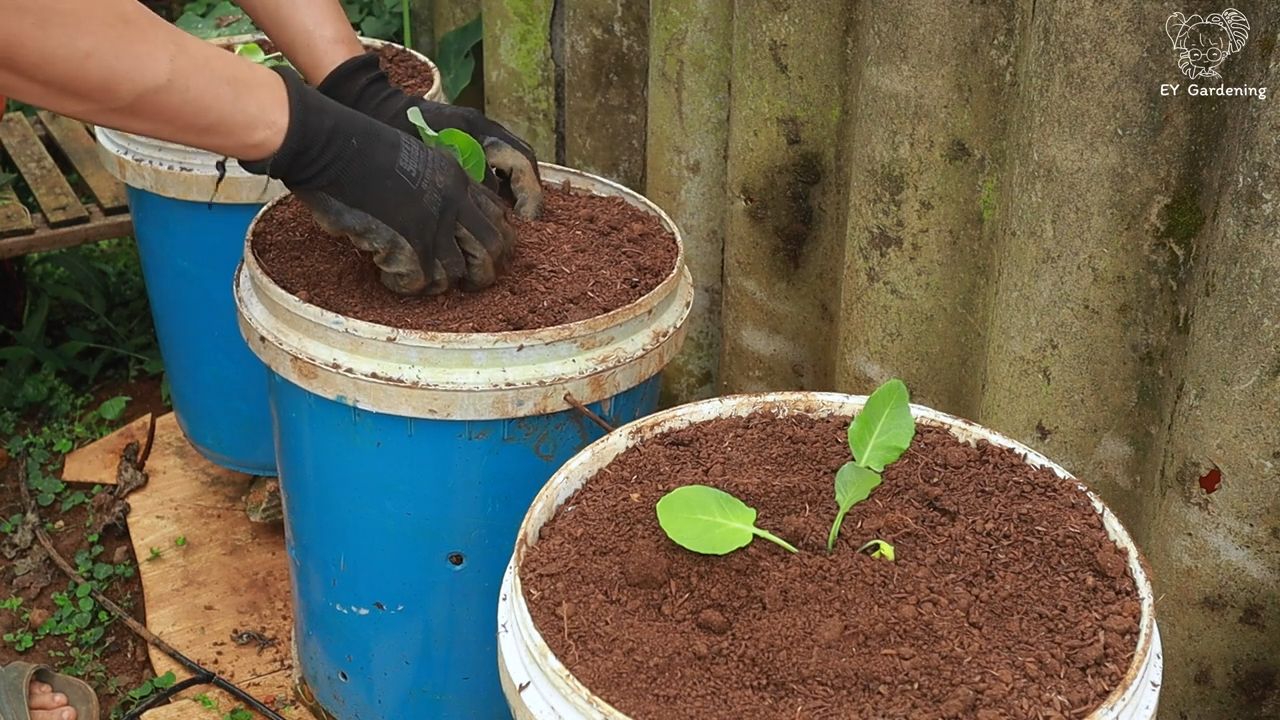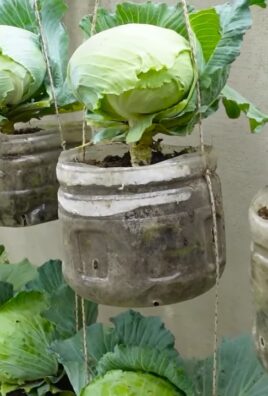Growing Cauliflower and Broccoli in your own backyard might seem daunting, but trust me, it’s more achievable (and rewarding!) than you think. Imagine harvesting crisp, fresh cauliflower and vibrant green broccoli right outside your door, knowing exactly where your food came from and how it was grown. Forget those wilted, overpriced veggies at the grocery store!
For centuries, these cruciferous vegetables have been staples in diets around the world. From the Roman Empire, where broccoli was carefully cultivated, to the elaborate gardens of Renaissance Europe, cauliflower and broccoli have been prized for their nutritional value and unique flavors. But you don’t need to be a seasoned farmer to enjoy these garden delights.
In today’s world, where we’re increasingly conscious of healthy eating and sustainable living, growing cauliflower and broccoli at home offers a fantastic way to connect with nature, reduce your carbon footprint, and save money. This DIY guide is packed with simple tricks and hacks that will empower even the most novice gardener to successfully cultivate these delicious and nutritious vegetables. I’m going to share my secrets to help you avoid common pitfalls and maximize your harvest. Let’s get our hands dirty and transform your garden into a thriving source of fresh, homegrown goodness!

Kopfkohl-Anbau für Anfänger: Blumenkohl und Brokkoli im eigenen Garten
Hey Gartenfreunde! Ich liebe es, frisches Gemüse direkt aus meinem Garten zu ernten. Blumenkohl und Brokkoli sind dabei absolute Favoriten. Sie sind nicht nur super gesund, sondern schmecken auch einfach fantastisch, wenn sie frisch geerntet auf dem Teller landen. Aber keine Sorge, auch wenn du noch kein Profi-Gärtner bist, kannst du diese beiden leckeren Kohlsorten erfolgreich anbauen. Ich zeige dir, wie es geht!
Die Grundlagen: Was Blumenkohl und Brokkoli zum Wachsen brauchen
Bevor wir loslegen, lass uns kurz die wichtigsten Bedürfnisse von Blumenkohl und Brokkoli klären. Beide gehören zur Familie der Kreuzblütler und haben ähnliche Ansprüche:
* Sonne: Mindestens 6 Stunden direkte Sonneneinstrahlung pro Tag sind ideal.
* Boden: Ein gut durchlässiger, nährstoffreicher Boden ist entscheidend. Der pH-Wert sollte zwischen 6,0 und 7,0 liegen.
* Wasser: Regelmäßige Bewässerung ist wichtig, besonders während der Kopfbildung.
* Nährstoffe: Blumenkohl und Brokkoli sind Starkzehrer und benötigen ausreichend Dünger.
* Kühle Temperaturen: Beide Kohlsorten bevorzugen kühle Temperaturen (15-20°C). Hohe Temperaturen können zu Problemen führen.
Schritt-für-Schritt Anleitung: Blumenkohl und Brokkoli pflanzen
Jetzt geht’s ans Eingemachte! Ich zeige dir, wie du Blumenkohl und Brokkoli erfolgreich pflanzt:
1. Die richtige Sorte auswählen:
Es gibt viele verschiedene Sorten von Blumenkohl und Brokkoli. Achte bei der Auswahl auf die Reifezeit und die Anbaubedingungen in deiner Region. Frühsorten sind ideal, wenn du in einer Region mit kurzen Sommern lebst. Spätsorten eignen sich besser für Regionen mit milden Wintern. Ich persönlich mag den Romanesco Blumenkohl sehr gerne, weil er so dekorativ ist. Beim Brokkoli bevorzuge ich Sorten, die Seitentriebe bilden, so kann ich länger ernten.
2. Vorkultur oder Direktsaat?
Ich empfehle dir, Blumenkohl und Brokkoli vorzuziehen. Das gibt dir einen Vorsprung und schützt die jungen Pflanzen vor Schädlingen. Du kannst die Samen etwa 6-8 Wochen vor dem letzten Frosttermin in Anzuchtschalen oder kleinen Töpfen aussäen. Die Direktsaat ist zwar auch möglich, aber etwas riskanter.
3. Aussaat der Samen:
Fülle die Anzuchtschalen mit Anzuchterde. Drücke die Erde leicht an und säe die Samen etwa 1 cm tief. Gieße die Erde vorsichtig an und stelle die Schalen an einen hellen, warmen Ort (ca. 20°C). Die Erde sollte immer leicht feucht sein.
4. Pikieren der Sämlinge:
Sobald die Sämlinge ihre ersten richtigen Blätter gebildet haben (nach ca. 2-3 Wochen), kannst du sie pikieren. Das bedeutet, dass du die einzelnen Pflanzen vorsichtig aus den Anzuchtschalen nimmst und in größere Töpfe umpflanzt. Verwende dafür wieder Anzuchterde.
5. Abhärten der Pflanzen:
Bevor du die Pflanzen ins Freie setzt, solltest du sie abhärten. Das bedeutet, dass du sie für etwa eine Woche tagsüber ins Freie stellst und sie nachts wieder hereinholst. So gewöhnen sie sich langsam an die Bedingungen im Garten.
6. Den Boden vorbereiten:
Bereite den Boden im Garten vor, indem du ihn lockerst und mit Kompost oder anderem organischen Material anreicherst. Achte darauf, dass der Boden gut durchlässig ist.
7. Pflanzen ins Freie setzen:
Sobald die Gefahr von Frost vorüber ist, kannst du die Pflanzen ins Freie setzen. Pflanze sie in einem Abstand von etwa 45-60 cm zueinander. Gieße die Pflanzen nach dem Einpflanzen gut an.
8. Regelmäßige Bewässerung:
Blumenkohl und Brokkoli benötigen regelmäßige Bewässerung, besonders während der Kopfbildung. Achte darauf, dass der Boden immer leicht feucht ist. Vermeide aber Staunässe.
9. Düngung:
Dünge die Pflanzen regelmäßig mit einem organischen Dünger oder einem speziellen Kohldünger. Ich verwende gerne Hornspäne oder Komposttee.
10. Schutz vor Schädlingen:
Blumenkohl und Brokkoli sind anfällig für verschiedene Schädlinge, wie z.B. Kohlweißlinge, Erdflöhe und Kohlfliegen. Schütze die Pflanzen mit einem Insektenschutznetz oder verwende biologische Schädlingsbekämpfungsmittel.
Probleme erkennen und lösen: Tipps für gesunde Pflanzen
Auch wenn du alles richtig machst, können manchmal Probleme auftreten. Hier sind einige häufige Probleme und wie du sie lösen kannst:
* Gelbe Blätter: Gelbe Blätter können ein Zeichen für Nährstoffmangel sein. Dünge die Pflanzen mit einem geeigneten Dünger.
* Kleine Köpfe: Kleine Köpfe können durch Wassermangel oder zu hohe Temperaturen verursacht werden. Achte auf regelmäßige Bewässerung und schütze die Pflanzen vor direkter Sonneneinstrahlung während der heißesten Stunden des Tages.
* Schädlinge: Kontrolliere die Pflanzen regelmäßig auf Schädlinge und bekämpfe sie bei Bedarf mit biologischen Mitteln.
* Krankheiten: Achte auf Anzeichen von Krankheiten, wie z.B. Mehltau oder Kohlhernie. Entferne befallene Blätter oder Pflanzen sofort, um die Ausbreitung der Krankheit zu verhindern.
Die Ernte: Wann ist der richtige Zeitpunkt?
Der richtige Zeitpunkt für die Ernte hängt von der Sorte und den Anbaubedingungen ab.
* Blumenkohl: Ernte den Blumenkohl, wenn der Kopf fest und kompakt ist und die Röschen noch geschlossen sind. Wenn sich die Röschen öffnen, ist der Blumenkohl überreif und schmeckt nicht mehr so gut.
* Brokkoli: Ernte den Brokkoli, wenn die Röschen fest und grün sind. Wenn die Röschen gelb werden oder sich öffnen, ist der Brokkoli überreif. Viele Brokkolisorten bilden nach der Haupternte Seitentriebe, die du ebenfalls ernten kannst.
Zusätzliche Tipps für eine reiche Ernte
Hier sind noch ein paar zusätzliche Tipps, die dir helfen können, eine reiche Ernte zu erzielen:
* Fruchtfolge beachten: Pflanze Blumenkohl und Brokkoli nicht jedes Jahr am selben Standort. Wechsle die Anbaufläche, um Krankheiten und Schädlingen vorzubeugen.
* Beipflanzung: Pflanze Blumenkohl und Brokkoli zusammen mit anderen Pflanzen, die sie vor Schädlingen schützen oder das Wachstum fördern. Gute Nachbarn sind z.B. Ringelblumen, Kapuzinerkresse und Dill.
* Mulchen: Mulche den Boden um die Pflanzen mit Stroh oder Rasenschnitt. Das hält den Boden feucht und unterdrückt Unkraut.
* Regelmäßiges Hacken: Hacke den Boden regelmäßig, um ihn locker zu halten und Unkraut zu entfernen.
Fazit
Mit ein wenig Geduld und Sorgfalt kannst du auch als Anfänger erfolgreich Blumenkohl und Brokkoli in deinem eigenen Garten anbauen. Es ist ein tolles Gefühl, frisches, selbst angebautes Gemüse zu ernten und zu genießen. Also, worauf wartest du noch? Ran an die Schaufel und los geht’s! Ich wünsche dir viel Erfolg und eine reiche Ernte!

Conclusion
Growing your own cauliflower and broccoli might seem daunting, but with a little patience and the right approach, you can enjoy fresh, homegrown vegetables bursting with flavor. This DIY trick, focusing on soil preparation and pest control, is a game-changer for anyone looking to cultivate these cruciferous delights successfully. It’s not just about saving money; it’s about knowing exactly what goes into your food and experiencing the satisfaction of nurturing something from seed to table.
The key takeaway here is the importance of creating a nutrient-rich environment for your cauliflower and broccoli. By amending your soil with compost and ensuring proper drainage, you’re setting the stage for healthy, vigorous growth. The added benefit of using companion planting and netting techniques to deter pests minimizes the need for harsh chemicals, resulting in a truly organic and delicious harvest.
Consider these variations to personalize your growing experience:
* Succession Planting: Plant new seedlings every few weeks to extend your harvest season. This ensures a continuous supply of fresh cauliflower and broccoli throughout the growing period.
* Different Varieties: Experiment with different varieties of cauliflower and broccoli to discover your favorites. Purple cauliflower, Romanesco broccoli, and sprouting broccoli offer unique flavors and textures.
* Container Gardening: If you have limited space, try growing cauliflower and broccoli in large containers. Just make sure to choose a container with adequate drainage and provide regular watering and fertilization.
* Companion Planting Combinations: Explore different companion planting combinations to maximize pest control and improve soil health. Marigolds, nasturtiums, and dill are all excellent choices for attracting beneficial insects and repelling unwanted pests.
Don’t be afraid to get your hands dirty and embrace the learning process. Growing cauliflower and broccoli is a rewarding experience that connects you to nature and provides you with fresh, healthy food. This DIY trick is your starting point, but the journey is yours to customize and explore.
We encourage you to try this method for growing cauliflower and broccoli in your own garden. Share your experiences, successes, and challenges in the comments below. Your insights can help other gardeners learn and improve their own growing techniques. Let’s build a community of passionate growers who are dedicated to cultivating delicious and healthy vegetables! Remember, the best way to learn is by doing, so get out there and start planting!
Frequently Asked Questions (FAQ)
What are the most common problems when growing cauliflower and broccoli, and how does this DIY trick address them?
The most common problems include poor soil quality, pest infestations (cabbage worms, aphids, etc.), and diseases (clubroot, black rot). This DIY trick directly addresses these issues by emphasizing soil preparation with compost to provide essential nutrients and improve drainage, which helps prevent diseases. The use of netting and companion planting naturally deters pests, reducing the need for chemical interventions. By focusing on these preventative measures, you create a healthier growing environment that minimizes the risk of these common problems.
How much space do cauliflower and broccoli plants need?
Cauliflower and broccoli plants need adequate space to grow and develop properly. Generally, allow 18-24 inches between plants and 24-36 inches between rows. This spacing allows for proper air circulation, which helps prevent diseases, and ensures that each plant has enough room to access sunlight and nutrients. If you’re growing in containers, choose a pot that is at least 12 inches in diameter for each plant.
What type of soil is best for growing cauliflower and broccoli?
Cauliflower and broccoli thrive in well-drained, fertile soil with a pH between 6.0 and 7.0. Amend your soil with plenty of compost or well-rotted manure to improve its structure and nutrient content. Avoid heavy clay soils, as they can retain too much moisture and lead to root rot. If you have clay soil, consider adding sand or other organic matter to improve drainage.
How often should I water cauliflower and broccoli plants?
Water cauliflower and broccoli plants regularly, especially during dry periods. Aim to keep the soil consistently moist but not waterlogged. Water deeply at the base of the plants, avoiding wetting the foliage, which can encourage fungal diseases. A good rule of thumb is to water when the top inch of soil feels dry to the touch. Mulching around the plants can help retain moisture and suppress weeds.
What are the best companion plants for cauliflower and broccoli?
Companion planting can be a great way to deter pests, attract beneficial insects, and improve soil health. Some of the best companion plants for cauliflower and broccoli include:
* Marigolds: Repel nematodes and other soil pests.
* Nasturtiums: Attract aphids away from your cauliflower and broccoli.
* Dill: Attract beneficial insects like ladybugs and lacewings, which prey on aphids and other pests.
* Rosemary: Deters cabbage moths.
* Thyme: Repels cabbage white butterflies.
* Garlic and Onions: Repel a variety of pests.
How do I protect my cauliflower and broccoli from pests like cabbage worms?
Cabbage worms are a common pest that can decimate cauliflower and broccoli plants. Here are some effective ways to protect your plants:
* Netting: Cover your plants with netting or row covers to prevent cabbage moths from laying their eggs on the leaves.
* Handpicking: Regularly inspect your plants and handpick any cabbage worms you find.
* Bacillus thuringiensis (Bt): Apply Bt, a natural bacteria that is toxic to cabbage worms, to your plants.
* Companion Planting: Plant companion plants like marigolds and nasturtiums to deter cabbage moths.
How do I know when my cauliflower and broccoli are ready to harvest?
Cauliflower is ready to harvest when the head is firm, compact, and white (or the color of the variety you are growing). The head should be about 6-8 inches in diameter. Broccoli is ready to harvest when the flower buds are tight and green. Cut the main head with a sharp knife, leaving a few inches of stem. Side shoots will continue to develop after the main head is harvested, providing you with a longer harvest season.
Can I grow cauliflower and broccoli in containers?
Yes, you can grow cauliflower and broccoli in containers, but you’ll need to choose a large container that is at least 12 inches in diameter for each plant. Use a well-draining potting mix and provide regular watering and fertilization. Container-grown plants may need more frequent watering than those grown in the ground.
What are some common diseases that affect cauliflower and broccoli, and how can I prevent them?
Common diseases include clubroot, black rot, and downy mildew. To prevent these diseases:
* Choose disease-resistant varieties.
* Ensure good soil drainage.
* Practice crop rotation.
* Avoid overhead watering.
* Remove and destroy any infected plants.
* Maintain proper spacing between plants to promote air circulation.
How important is sunlight for growing cauliflower and broccoli?
Sunlight is crucial for growing healthy cauliflower and broccoli. These plants need at least 6 hours of direct sunlight per day. If you’re growing in a shady area, your plants may not produce well-formed heads. Choose a sunny location for your garden to ensure optimal growth.




Leave a Comment